Hiroji Kubota
1939
In 1965, after staying in Chicago for some time, Kubota moved back to New York and worked as a freelance photographer. In the same year, he reported the details of “New York Special Education Program”, and began to work with Magnum Photos, becoming the first Asian member of this prestigious organization. Kubota has focused on the American occupation of Okinawa and the liberation of Saigon, and then expanded his coverage to Myanmar, Korea, China, and Japan. From 1978 to 1985, Kubota completed his shooting and reporting of all provinces in China, where he took more than 200,000 photographs. On January 15, 1981, “An Exhibition of Photographs by Hiroji Kubota” was opened at the National Art Museum of China, and his documentary-style pictures have well inspired the salon-style young photographers to shift their focus towards social observation. In March 1985, he once again held “On China – Exhibition of Photographs by Hiroji Kubota” at the National Art Museum of China. Subsequently, the “China” exhibition has been exhibited in many major art museums in the United States, Japan, and Europe, and a book of the same title China was translated into seven different languages. Kubota graduated in political science from Waseda University. His early acquittance with the principal members of the Magnum Photos, such as Rene Burri and Elliott Erwitt, encouraged him to become a photographer who documents the reality of human society. He joined Magnum Photos in 1971 and is the only Japanese photographer. Graduated from politics major, Kubota’s photographic works possess a keen sense of politics and a sharp social perspective. From recording American Civil Rights Movement to the Vietnam War, from tracking the great changes in China to the exclusive reports of North Korea, as well as taking photographs of his beloved motherland, his camera has witnessed many actual realities and historical changes in the world over the past 50 years. Kubota has given significant support to CAFA Art Museum in the academic research, exhibition and collection. Especially between 1978 and 1985, Kubota finished the reports on all provinces in China, taking more than 200,000 photographs in China, which lasted more than 7 years, a total of 1050 days. Mr. Kubota’s photographs hugely influenced a large number of Chinese photographers who were active in the 1980s.
In 1965, after staying in Chicago for some time, Kubota moved back to New York and worked as a freelance photographer. In the same year, he reported the details of “New York Special Education Program”, and began to work with Magnum Photos, becoming the first Asian member of this prestigious organization. Kubota has focused on the American occupation of Okinawa and the liberation of Saigon, and then expanded his coverage to Myanmar, Korea, China, and Japan. From 1978 to 1985, Kubota completed his shooting and reporting of all provinces in China, where he took more than 200,000 photographs. On January 15, 1981, “An Exhibition of Photographs by Hiroji Kubota” was opened at the National Art Museum of China, and his documentary-style pictures have well inspired the salon-style young photographers to shift their focus towards social observation. In March 1985, he once again held “On China – Exhibition of Photographs by Hiroji Kubota” at the National Art Museum of China. Subsequently, the “China” exhibition has been exhibited in many major art museums in the United States, Japan, and Europe, and a book of the same title China was translated into seven different languages. Kubota graduated in political science from Waseda University. His early acquittance with the principal members of the Magnum Photos, such as Rene Burri and Elliott Erwitt, encouraged him to become a photographer who documents the reality of human society. He joined Magnum Photos in 1971 and is the only Japanese photographer. Graduated from politics major, Kubota’s photographic works possess a keen sense of politics and a sharp social perspective. From recording American Civil Rights Movement to the Vietnam War, from tracking the great changes in China to the exclusive reports of North Korea, as well as taking photographs of his beloved motherland, his camera has witnessed many actual realities and historical changes in the world over the past 50 years. Kubota has given significant support to CAFA Art Museum in the academic research, exhibition and collection. Especially between 1978 and 1985, Kubota finished the reports on all provinces in China, taking more than 200,000 photographs in China, which lasted more than 7 years, a total of 1050 days. Mr. Kubota’s photographs hugely influenced a large number of Chinese photographers who were active in the 1980s.


